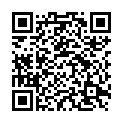|
|
|
| Module code: E2510 |
|
|
2V+2P (4 hours per week) |
|
5 |
| Semester: 5 |
| Mandatory course: yes |
Language of instruction:
German |
Assessment:
Written exam
[updated 08.01.2020]
|
E2510 (P200-0005) Electrical Engineering and Information Technology, Bachelor, ASPO 01.10.2018
, semester 5, mandatory course, technical
|
60 class hours (= 45 clock hours) over a 15-week period.
The total student study time is 150 hours (equivalent to 5 ECTS credits).
There are therefore 105 hours available for class preparation and follow-up work and exam preparation.
|
Recommended prerequisites (modules):
None.
|
Recommended as prerequisite for:
|
Module coordinator:
Prof. Dr. Martin Buchholz |
Lecturer: Prof. Dr. Martin Buchholz
[updated 10.09.2018]
|
Learning outcomes:
After successfully completing this module, students will be able to carry out digital signal processing and analyze telecommunications signals and systems. They will be familiar with the different structures of discrete time systems and be able to analyze them analytically with the help of the discrete Fourier transform and the Z-transform. They will be capable of specifying and implementing digital, recursive and non-recursive filters based on a defined filter specification. Students will be able to use development tools that simulate algorithms and implement them in an FPGA using a model-based approach. They will be able to describe the design flow for the real-time realization of digital algorithms. Student will independently implement digital filters, signal generators and other digital algorithms in the course of this module.
[updated 08.01.2020]
|
Module content:
1. Introduction, motivation 2. Basics 3. Ideal and real sampling, sampling theorem, practical aspects of sampling 4. Discrete-time signals and systems 5. Discrete time convolution, FIR and IIR systems 6. Structure of discrete time systems 7. Representation of discrete time signals and systems in the frequency domain 8. The Z-transform 9. Designing recursive digital filters 10. Design of non-recursive digital filters 11. Simulating digital signal processing systems 12. Model-based implementation of digital algorithms in an FPGA Tutorials will be available for each chapter. Parallel to the theoretical part, digital algorithms will be simulated in the PC lab using a suitable software tool and prepared for implementation in an FPGA (Field Programable Gate Array) or DSP (Digital Signal Processor).
[updated 08.01.2020]
|
Teaching methods/Media:
Lecture notes, beamer, PC lab, EDA simulation tools with classroom licenses
[updated 08.01.2020]
|
Recommended or required reading:
Brigham, Elbert Oran: FFT Anwendungen, Oldenbourg, 1997 Götz, Hermann: Einführung in die digitale Signalverarbeitung, Teubner, 1998, 3. Aufl. Hoffmann, Josef; Quint, Franz: Signalverarbeitung mit Matlab und Simulink: Anwendungsorientierte Simulationen, Oldenbourg, 2007 Kammeyer, Karl-Dirk; Kroschel, Kristian: Digitale Signalverarbeitung Filterung und Spektralanalyse mit MATLAB-Übungen, Springer Vieweg, (latest edition) Oppenheim, Alan V.; Schafer, Ronald W.; Buck, John R.: Zeitdiskrete Signalverarbeitung, Oldenbourg, (latest edition) Schmidt, Herrad; Schwabl-Schmidt, Manfred: Digitale Filter: Theorie und Praxis mit AVR-Mikrocontrollern, Springer Vieweg, 2014, ISBN 978-3658035228 Stearns, Samuel D.; Hush Don R.: Digitale Verarbeitung analoger Signale, Oldenbourg, 1999, 7. Aufl. von Grünigen, Daniel Ch.: Digitale Signalverarbeitung, Hanser, (latest edition) Werner, Martin: Digitale Signalverarbeitung mit Matlab, Intensivkurs mit 16 Versuchen, Vieweg + Teubner, (latest edition)
[updated 08.01.2020]
|


